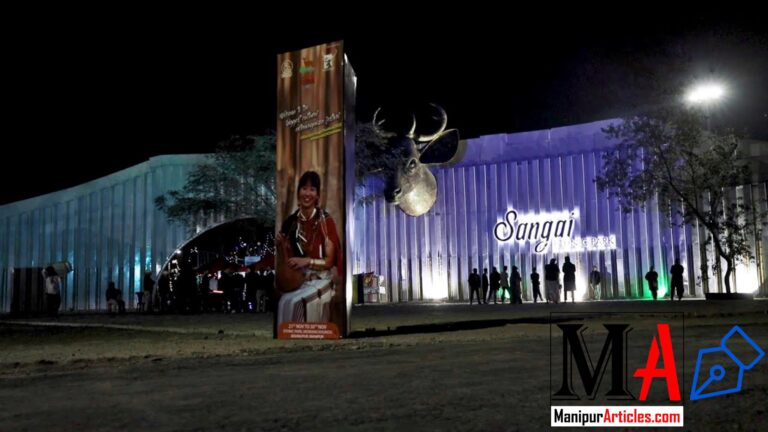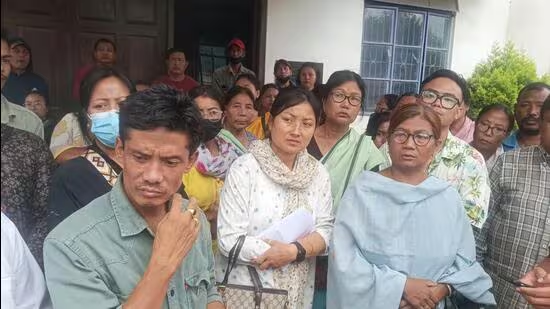Manipur: Security Forces Seize Arms and Ammunition in Kangpokpi District
Summary of the News Article
In a significant operation on January 4, 2025, security forces in Kangpokpi district, Manipur, recovered a substantial cache of arms and ammunition. The seized items included modified sniper rifles, mortars, grenades, pistols, and communication devices, signaling heightened insurgency activity in the region. This action underscores the relentless efforts by law enforcement to curb violence and restore peace in the state.
Manipur’s Battle Against Insurgency: A Detailed Analysis
Introduction: Why Manipur’s Security Matters
Manipur, nestled in the northeastern corner of India, is not just a state of stunning landscapes but also a region grappling with deep-rooted insurgency. The recent arms seizure in Kangpokpi district sheds light on the challenges security forces face in maintaining order. So, what does this mean for Manipur’s future? Let’s dive into the details.
What Happened in Kangpokpi District?
The operation conducted in Loibol Khunou village was no ordinary one. Here’s what was recovered:
- Modified Sniper Rifle (7.62mm): A precision weapon that’s not typically seen in conventional insurgent arsenals.
- Improvised Long-Range Mortar: Locally fabricated but lethal, showcasing the adaptability of insurgent groups.
- Pistols and Magazines: Essential for close combat situations.
- Grenades: Anti-riot, picket, and lethal grenades hinting at planned diverse engagements.
- Wireless Communication Devices: Indicating a structured communication network among militant factions.
This haul wasn’t just about the quantity—it was the sophistication that alarmed authorities. Such finds indicate a well-organized effort to disrupt peace in the region.
The Bigger Picture: Why Arms Seizures Matter
This isn’t the first time security forces have uncovered arms caches in Manipur. But each discovery adds a piece to the puzzle:
- Supply Chains: These operations raise questions about how such weapons make their way into the state.
- Militant Networks: Seizures disrupt operations temporarily but reveal the broader networks at play.
- Public Safety: Every weapon removed from insurgent hands is one less threat to civilians.
But it’s not just about confiscating arms; it’s about dismantling the system that sustains these activities.
The Role of Geography and Politics
Manipur’s rugged terrain offers a natural advantage to insurgents. Dense forests and hilly regions make it tough for security forces to track movements. Add to that the complex socio-political dynamics—ethnic tensions, demands for autonomy, and historical grievances—and you’ve got a volatile mix.
The insurgency isn’t just a military problem; it’s deeply rooted in unresolved socio-political issues.
The Human Angle: How Does This Impact Locals?
Imagine living in a place where the sight of armed personnel is routine. For the residents of Kangpokpi, the constant tension is exhausting. Every arms seizure offers a glimmer of hope but also a reminder of the precarious peace they live with.
Local communities often find themselves caught in the crossfire—literally and figuratively. On one hand, they face coercion from insurgents; on the other, they deal with the scrutiny of security forces.
What’s Being Done to Tackle This Issue?
Manipur isn’t new to insurgency, and the strategies to combat it have evolved over time:
- Proactive Intelligence: The Kangpokpi operation was a result of precise intelligence, emphasizing the importance of ground-level information gathering.
- Community Engagement: Security forces are increasingly relying on local communities for tips and support. Building trust is key here.
- Technology Deployment: From drones to advanced surveillance equipment, technology is playing a big role in counter-insurgency.
- Socio-Economic Initiatives: Beyond military actions, the government is pushing for education, employment, and development to address the root causes of unrest.
Challenges Ahead
While the recent operation is commendable, it’s a drop in the ocean when you look at the larger challenges:
- Ever-Evolving Tactics: Insurgents are constantly adapting, making it a game of cat and mouse.
- External Influence: The flow of sophisticated weaponry hints at external involvement, possibly from international arms smugglers.
- Balancing Security and Rights: Ensuring safety without alienating local populations remains a delicate balancing act.
What Can Be Done Better?
To ensure lasting peace in regions like Kangpokpi, a multi-pronged approach is needed:
- Stronger Border Controls: To cut off the inflow of weapons.
- Dialogue and Reconciliation: Engaging with insurgent groups willing to negotiate.
- Empowering Local Youth: Giving them opportunities to break the cycle of poverty and violence.
The recent arms seizure is a reminder that while significant progress has been made, the road to peace is long and winding.
The Road Ahead: A Vision for Peace
Manipur’s story isn’t just about insurgency—it’s about resilience. The people of Manipur, despite decades of unrest, continue to hope for a better tomorrow. Security forces, local leaders, and the government must work hand-in-hand to turn that hope into reality.
It’s not just about seizing arms; it’s about seizing the opportunity to build a peaceful, prosperous Manipur.
FAQs
- What was the significance of the recent arms seizure in Kangpokpi?
The operation highlighted the presence of sophisticated weapons among insurgents, pointing to organized and well-equipped militant networks. - How do insurgent groups acquire such weapons?
While some are locally made, others are smuggled through international routes, indicating external support or black-market connections. - What role do locals play in combating insurgency?
Locals often provide crucial intelligence. Building trust between them and security forces is essential for effective operations. - What challenges do security forces face in Manipur?
Rugged terrain, limited resources, and evolving insurgent tactics are some of the major hurdles. - How can lasting peace be achieved in Manipur?
A combination of military action, socio-economic development, political dialogue, and community engagement is crucial for long-term stability.



